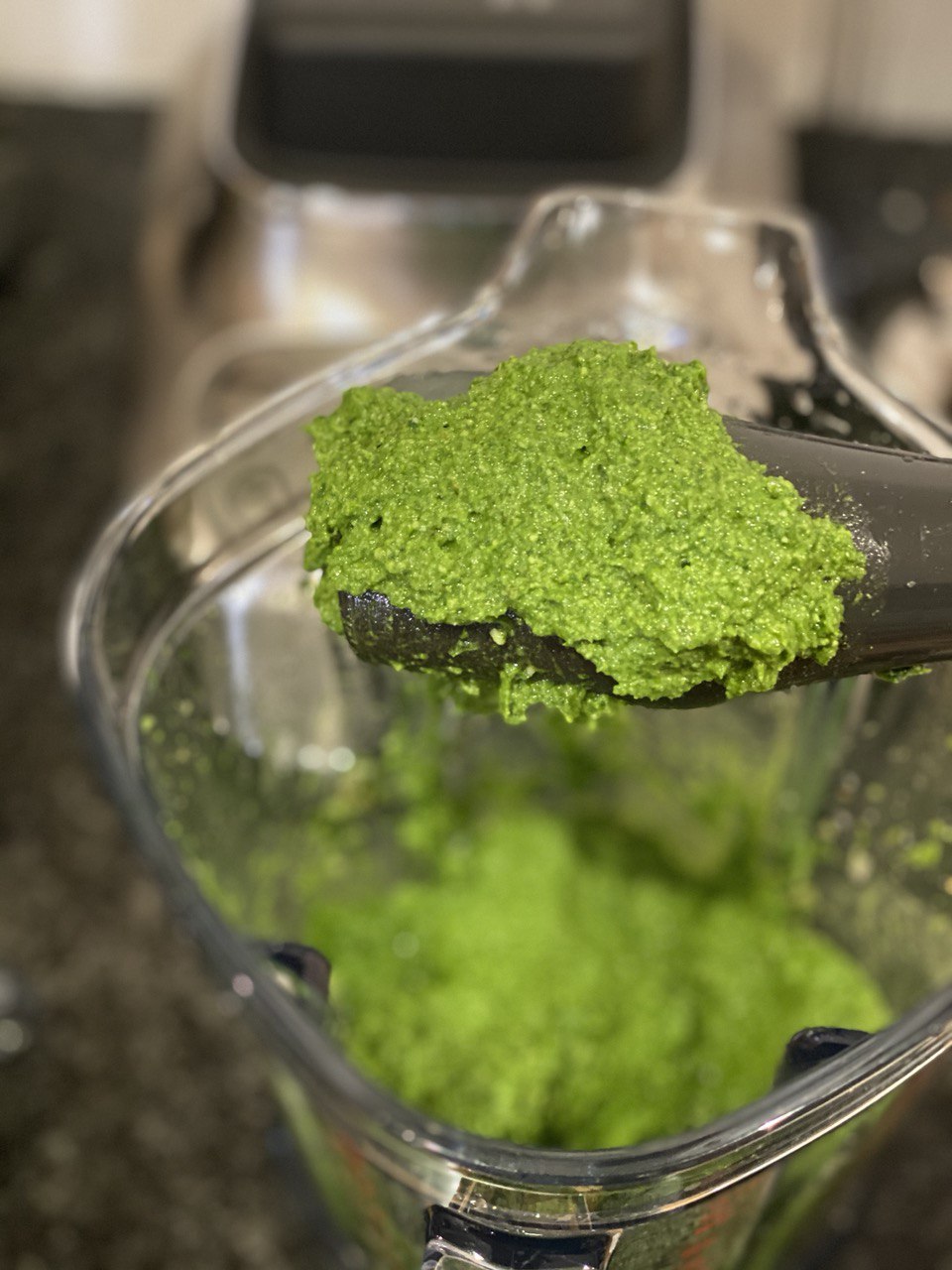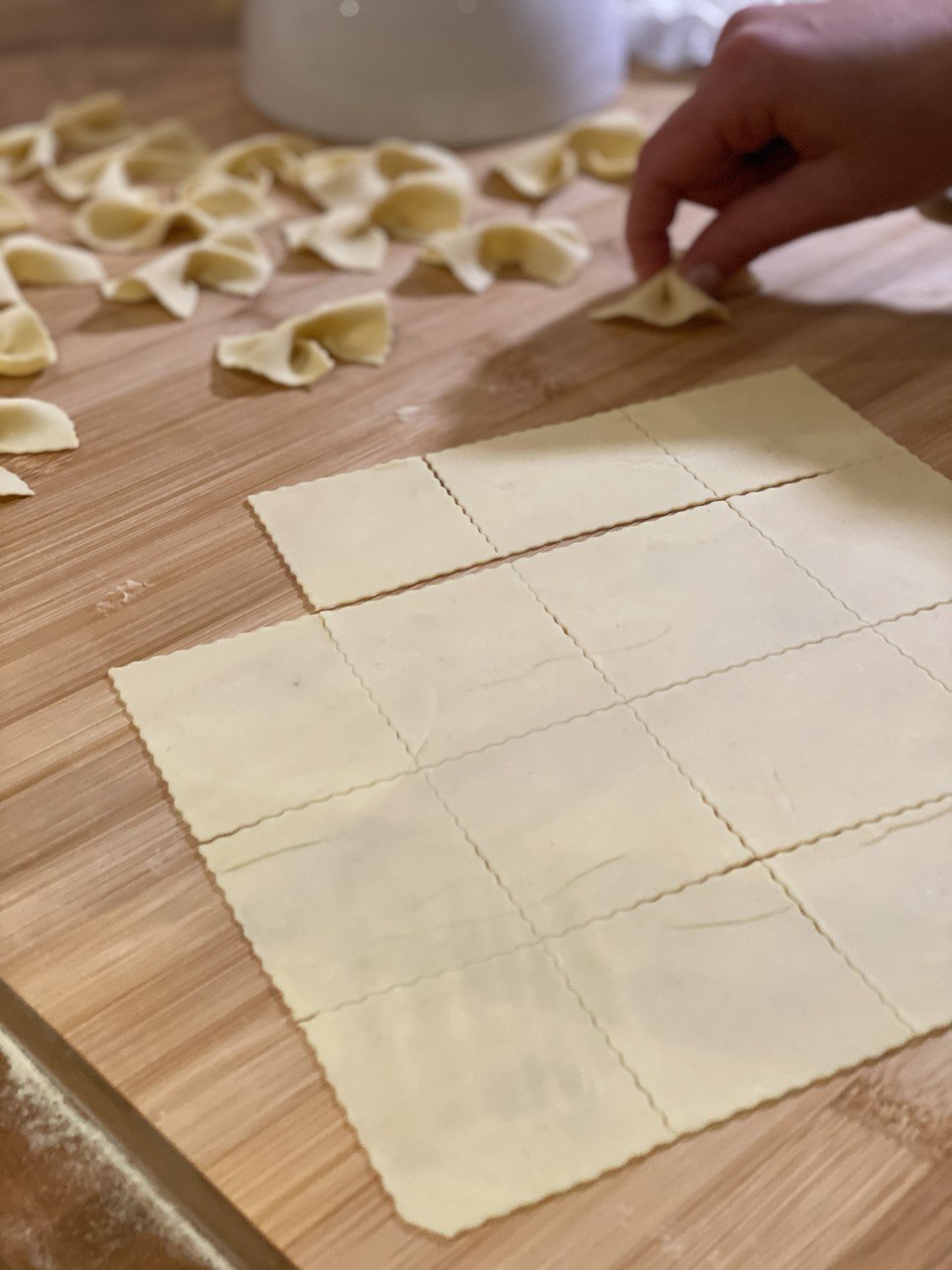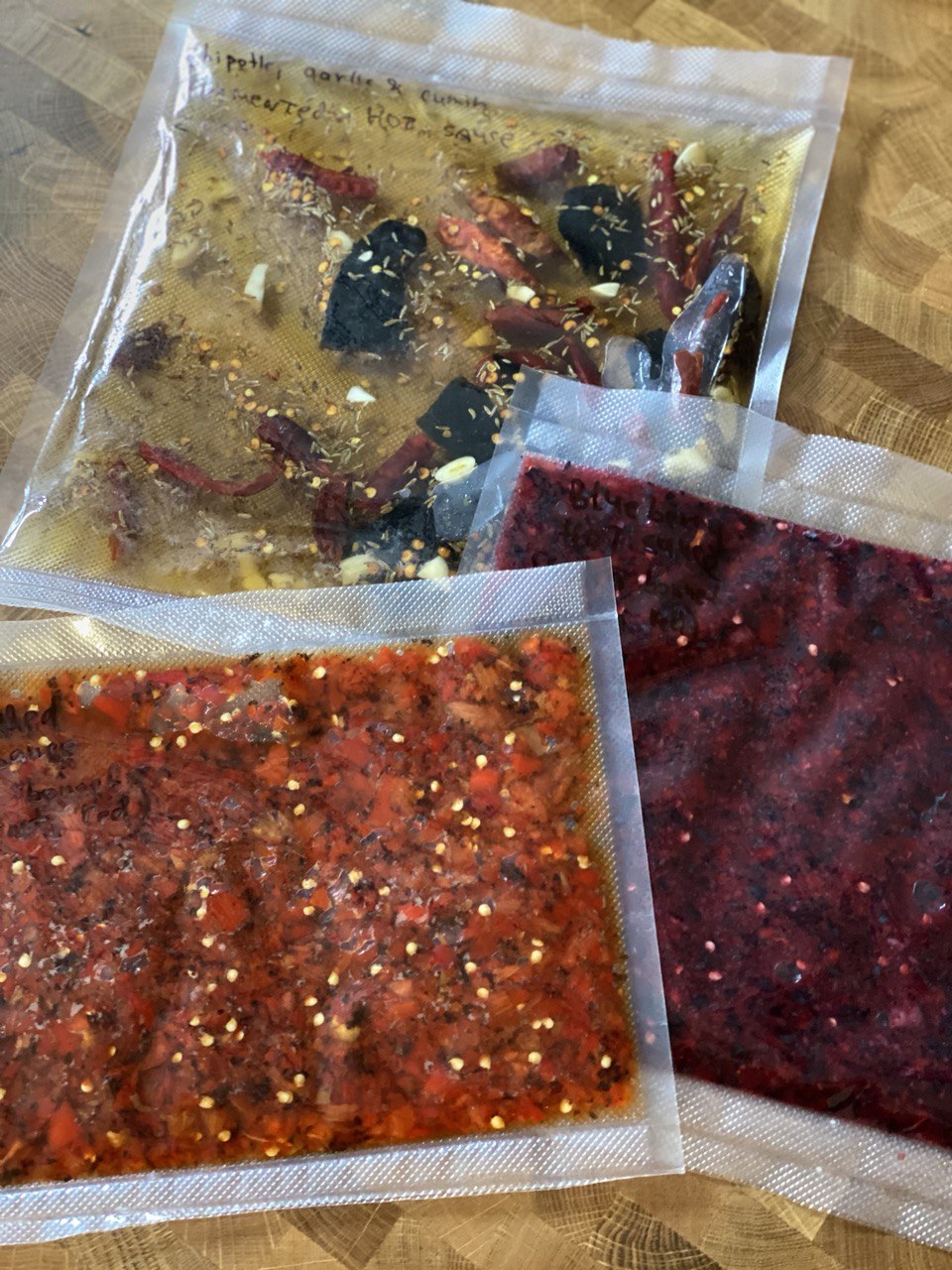Tuesday Triage #41
- TUESDAY TRIAGE #41 by Vadim Drobinin
- On greens season
- Gardening
- Fermented sauces
- Things I enjoyed reading
- 1. They Hacked McDonald’s Ice Cream Machines—and Started a Cold War by @a_greenberg
- 2. The Slander Industry by Kashmir Hill and Aaron Krolik
- 3. Following the Shortbread Crumbs by @_davidsmith
- 4. A Very 90s Death: The Tamagotchi Cemetery by @BurialsBeyond
- 5. 10 developers on what makes their games ‘hand-drawn’ by @sweetpotatoes
- 6. Cracking the Code of the Zombie by Steven Kurutz
- 7. Office chairs are a scam by Scott Locklin
- 8. Legends and science of bottomless pits, bogs, and lakes by @SpookyGeology
- 9. Bodies and souls, sophisticated ladies, and plucked strings by @colinfleminglit
- 10. Learn Hiragana: the ultimate guide by Jaered Koichi Croes
- Things I didn't know last Tuesday
- 1. Brutalist Architecture in London
- 2. Exploding cigar
- 3. Digital fashion
- 4. Gravity affects astronauts' speech
- 5. The Landlord's Game
- 6. Concrete arrows
- 7. Some American honey is radioactive
- 8. Cinchona bark is not only for tonics and to prevent malaria
- 9. Alexandra Limp
- 10. Wallfish
- Book of the week
- Thank you and see you in a week!
TUESDAY TRIAGE #41
by Vadim Drobinin ¶
Your weekly crème de la crème of the Internet is here!
27.04.2021 (read in browser)
On greens season ¶
Despite the weather fluctuations on the island, it does look like the Spring is coming.
One of those things I associate with the it the most is the abundance of fresh herbs and greens everywhere, this year even including our garden:

Which is very handy if you want to mix it with some breadcrumbs, parmegiano, olive oil, and salt:

And then recreate Massimo Bottura's pesto sauce by blending it with ice cubes to prevent oxydation:

We made some farfalle to go with it:

And look at these colours now:

Five out of five, will definitely do again.
Gardening ¶
Another adventure of mine recently was mild involvement in gardening.
In my case it ended up with soldering instead of planting:

But now I have self-watering chilli peppers: moisture sensors detect when water is needed and notify the Raspberry Pi, which in turn uses tiny water pumps to water the pots:

It's also capable of making annoying noises when the tank rans out of water, or send Telegram messages blaming me for leaving them exposed to the Sun for too long.
Fermented sauces ¶
While I wait for the peppers to fruit, I put some dried and store-bought fresh ones to a good use:

In clockwise order, a blueberry and Scotch bonnet fermented sauce, charred Scotch bonnet and Sweet Pointy peppers fermented sauce, and smoked cumin and garlic chili sauce (obviously fermented too):

They will take around a month to ripe properly, and then get blended again, maybe with some vinegar. I will keep you posted.
Things I enjoyed reading ¶
1. They Hacked McDonald’s Ice Cream Machines—and Started a Cold War by @a_greenberg ¶
I do not really remember when was the last time I've ordered ice cream from McDonald's, but seems like those who do it more often have to deal with constantly breaking machines, and this has a rather unexpected explanation.
The machine’s automated nightly pasteurization process, rather than make life easier for restaurant managers, has become their biggest albatross: Leave the machine with a bit too much or too little ingredient mixture in its hoppers, accidentally turn it off or unplug it at the wrong moment, or fall victim to myriad other trivial errors or acts of God, and the four-hour pasteurization process fails and offers a generic, inscrutable error message—meaning that the machine won’t work until the entire four hours of heating and freezing repeats, often in the middle of peak ice cream sales hours.
And besides being a story about two great things (ice cream and McDonald's, obviously), it shows well the caveats of getting a franchaise instead of starting something from scratch.
You never know how they'd want to make money. Maybe by selling you easy to break machines too.
2. The Slander Industry by Kashmir Hill and Aaron Krolik ¶
Another scary story about fragile reputation in the age of online messaging. I mentioned a similar one recently, but this time it is more of a detective novel than a cry for help: the author ruins their own reputation by posting a rumour and then tries to figure out how it gets spread and who are the people behind it.
My colleague Kashmir Hill and I were trying to learn who is responsible for — and profiting from — the growing ecosystem of websites whose primary purpose is destroying reputations.
So I wrote a nasty post. About myself.
From a completely different perspective, such a smart way to make money: repost lies about others and then offer help to remove them.
3. Following the Shortbread Crumbs by @_davidsmith ¶
For those watching the Apple event last week, here is an Easter Egg: just after the titles the video cuts on appearing lines of text which looks like a recipe and a recipe it is indeed.
Apple teases that they are about to reveal Ted Lasso’s secret shortbread recipe. Just as it is about to scroll into frame it cuts off.
This sounds like an internet treasure hunt to me, which I’m always here for.
The author manages to find the recipe they've teased about, and then reproduces it step by step to cook the same shortbread as the main character of one of Apple's specials.
4. A Very 90s Death: The Tamagotchi Cemetery by @BurialsBeyond ¶
I never had a Tamagotchi and still feel FOMO even a quarter of a century later. At least I didn't have to travel to Cornwall to bury it:
On January 17th 1997, two teenage girls were in Cornwall to bury their Tamagotchis, named Sid and Arty, two consoles never to be reset.
My first thought was very outdated parental shock, as Tamagotchi’s weren’t terribly cheap when they came out and to bury a brand new toy seems awfully wasteful. Taking another expensive trip to Argos wouldn’t have gone down too well in my household.
5. 10 developers on what makes their games ‘hand-drawn’ by @sweetpotatoes ¶
Despite being quite far from modern games (once a year I spend a few days playing Quake 3 and HoM&M:3, occasionally switching from the former to Duke Nukem 3D), I honestly enjoy watching their preview videos or download and play for half an hour, and this is a really insightful interview into designing one of the best ones, visually speaking.
“One of our main goals was to make a game that looks like a beautiful sketchbook that gets colored by watercolor washes as the world and its characters evolve,” Cozy Grove lead artist Noemí Gómez told Polygon. “The whole concept affected how we approach the line work — we aimed for a crispy, ink-looking linework — and rendering — heavily textured rendering — in Cozy Grove to resemble traditional art.”
6. Cracking the Code of the Zombie by Steven Kurutz ¶
Among the cocktails I enjoy there is hardly anything either too sweet, or too sour, and yet Tiki cocktails have a history worth my respect, and bringing this history through decades wasn't as easy as you might think:
To recreate the Beachcomber drinks, Mr. Berry became a kind of cocktail shamus. He visited libraries and thumbed through old issues of Gourmet on the chance any recipes had been printed (they hadn’t). Eventually, he learned that some of the Beachcomber’s bar staff had kept the secret recipes in little black books. Mr. Berry got his hands on one of the recipe books — but found that it too was coded.
7. Office chairs are a scam by Scott Locklin ¶
I spent more time working from home than from an office, and started to think of ergonomics only recently, but between a fancy chair and a standing desk picked the latter pretty much without thinking.
Partly because I still can't understand why a chair would cost like two iPhones.
Now, the reality is, there is absolutely no such thing as “ergonomics.” Nobody who isn’t a 60s era fighter plane or space capsule designer, has any idea how to make a chair that is “ergonomic” -nobody really has any idea what “ergonomic” means in terms of office chairs. It’s just a sort of virtue word with vaguely medical connotations. Cargo cult science at its best, designed to ward off bad juju like lawsuits. This is where it started to go bad really quickly.
Seems like I am not alone here.
8. Legends and science of bottomless pits, bogs, and lakes by @SpookyGeology ¶
The closest I got to geology was in my primary school, when I spent a few years rock climbing, and then never made it to hour first trip to the mountains because got too lazy to bother.
It's still lots of fun to read about them, and this selection of legends about "bottomless" pits is rather entertaining.
The unfathomable Mummelsee, in the northern Black Forest, Baden Baden, Germany was called the Lake of Miracles by the Romans. It supposedly would reject fish by throwing them out again. The lake has high peat content turning the water black and the pH to around 5, so it’s too low for fish. Any fish placed in it might have simply leaped out. The most famous legend was that of the King of the lake and his mermaid nymphs that lived there. The cirque lake, formed by glaciers, is a popular tourist location.
9. Bodies and souls, sophisticated ladies, and plucked strings by @colinfleminglit ¶
There is probably only one style of music, which could be guessed just by the way it is described:
At one point, Ellington’s piano sounds like it has a catch in its throat, given what Blanton has just played, and it steps aside to return the spotlight to the man of the match, who takes us home with a Keatsian lullaby. We ride the floating carpet, the cloud, the gently funneling wind, and I think, “Is this an instrument, sir, or do you command elements?” The asking of a question can be its own answer, and when I hear these Ellington-Blanton duets, I have mine.
Do you see what I mean?
10. Learn Hiragana: the ultimate guide by Jaered Koichi Croes ¶
It's not like I am learning Japanese any time soon (at least I wasn't going to, but now in slight doubts) but mnemonics are in the first place a fun exercise so give it a try too:
Many classes and individuals spend months learning hiragana. This is too long. You should be able to learn everything in a couple days. A week, tops. Some people have reported back that they could read all the hiragana after a few hours, using this method. How long it takes depends on you, but if you follow the steps laid out below, you'll come out the other side with the ability to read hiragana.
I pretty much suspected Hiragana being quite visual, but it is way more vivid than I have expected.
Things I didn't know last Tuesday ¶
1. Brutalist Architecture in London ¶
We used to live not that far from this building and always were wondering why'd someone build... this next to beautiful Victorian houses:

Well, I can answer it now:
After the destruction of so many buildings during WW2, there was a great need for new social housing which made the techniques used in brutalist architecture very popular in the 60s and 70s. Based on the philosophy of form following function and celebrating the materials used in construction. It is identified by extensive use of exposed, unfinished concrete and often features bold geometric forms with an abstract sculptural quality.
This is now my least favourite architecture style, thank you very much.
At least it looks really good in black and white pictures.
2. Exploding cigar ¶
Despite being used mostly as a prank, there were attempts to kill people with those.
Notable real-life incidents involving the non-lethal ilk include an exploding cigar purportedly given by Ulysses S. Grant to an acquaintance and a dust-up between Turkish military officers and Ernest Hemingway after he pranked one of them with an exploding cigar.

Now I have to be careful with gifts.
3. Digital fashion ¶
A new trend is emerging on the market and I don't get it yet:
The collection was released on fashion game and marketplace Drest, in addition to their website, with garments priced between £100-450. Rather than paying to own a physical garment, customers pay for digital versions they can overlay on images of themselves. Auroboros is the first digital-only clothing brand to sell on Drest.

So you buy a license to Photoshop your photo, how cool is that?!
4. Gravity affects astronauts' speech ¶
We know of many ways to gain an accent, and yet this one is the most unexpected:
Right after I landed, I could feel the weight of my lips and tongue and had to change how I was talking. I didn't realize I had learned to talk with a weightless tongue.
Due to changes to gravity people develop a new accent in the Space, so speak in a different way on the spaceship, and then in another (third) way once they come back.
5. The Landlord's Game ¶
Apparently Monopoly the game had a predcessor and it looks as cool:
The Landlord's Game is a board game patented in 1904 by Elizabeth Magie as U.S. Patent 748,626. It is a realty and taxation game intended to educate users about Georgism. It is the inspiration for the board game Monopoly.

6. Concrete arrows ¶
If you ever get lost in the States, you might get lucky to find a way out right on the ground:
In 1924, the federal government funded enormous concrete arrows to be built every 10 miles or so along established airmail routes to help the pilots trace their way across America in bad weather conditions and particularly at night, which was a more efficient time to fly.

7. Some American honey is radioactive ¶
I am not too surprised, but the summary that says "it is not that dangerous anymore" doesn't sound too optimistic either:
Most of it dissipated quickly, but the cesium stuck around and soaked into the soil where its chemical structure, which is similar to potassium, made it attractive to plants. Potassium and cesium are chemically similar and the study speculated that this is the reason the plants absorbed so much of the cesium, which led to it being in the pollen bees turned into honey.
8. Cinchona bark is not only for tonics and to prevent malaria ¶
That's actually quite a great article on its own, but my main highlight is how many things the bark has been used for, way more than it is nowadays (to be fair, mostly because side effects are quite dangerous).
As a muscular relaxant, quina quina had many uses to tranquilize a body overstimulated by heat, mosquitos or the many other undesirable influences which might persecute a poor human organism from the outside.
9. Alexandra Limp ¶
The story of this lady is like a textbook for those into fashion:
Alexandra of Denmark was the bride of the Prince of Wales, and a 19th Century fashion icon. The clothes she wore were copied as well. The chokers she wore to conceal a scar on her neck were copied. And when a bout of rheumatic fever left her with a pronounced limp… Well, that was copied too.
Also it prompted sellers to stock up on broken shoes as people wanted an easier way to fake limping.
10. Wallfish ¶
For all those fans of escargot, here is a very old-fashioned British dish that came from Romans:
Over time, though, snails all but disappeared from the English menu. Despite a short-lived resurgence of cider-poached wallfish in the 1960s, the dish was increasingly consigned to old recipes, and Somerset’s last wallfish-serving pub closed in the late 1990s.
Now I can be even more proud to live on that side of the channel.
Book of the week ¶
I jumped on a new journey recently, and this time it is about ice-cream making.
While I am not yet ready to show the result of my last few tries, I can definitely recommend the book that inspired 33% of my most successful attempts, thanks to David Lebovitz and his The Perfect Scoop:
The Aztecs were such trendsetters. Although it’s become fashionable, from Los Angeles to London, to spice up chocolate with chile pepper, it’s a custom that goes back more than a thousand years. No one has ever accused me of being particularly fashionable (especially when they see the way I dress), although I do like to spice up chocolate ice cream with a dose of chile. My preference is smoky ancho or chipotle chile powder, available in Mexican markets, but for those who like more heat, cayenne is hot…hot…hot! If you’re unsure of the strength of your chile powder, add the smaller amount and let it sit for a while. Taste and decide whether you’d like to add more. The subtle warmth can heat up as it stands.
One of my first memories of hot chocolate was with chile powder too, and that's quite hilarious as I was rather young and didn't have today's addiction to all things spice.
Here though the author goes into depths of building up a recipe for "hot chocolate" ice cream, including its consistency, and it will definitely be on my list of things to try as soon as possible.
I didn't get to experimenting with complex flavours yet, but so far tried all common ice-cream styles except, probably, sorbets and sherbets: from French to Philadelphia to frozen yogurts to Sicilian gelato.
Our ice-cream maker works doesn't require pre-chilling so I mostly spend time trying to find space for new tubs of freshly made goodness in the freezer – one day I will learn how to make smaller quantities.
Thank you and see you in a week! ¶
If you have any questions, or want to suggest a link for the next newsletter, please drop me a message on Twitter or reply to this email.
Cheers! 🍸